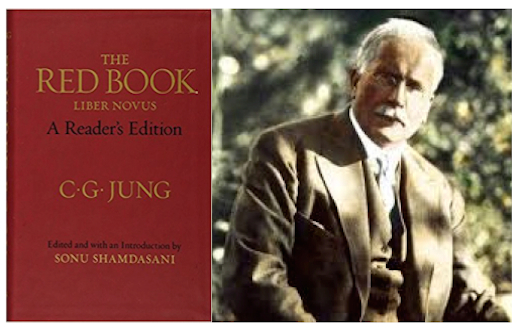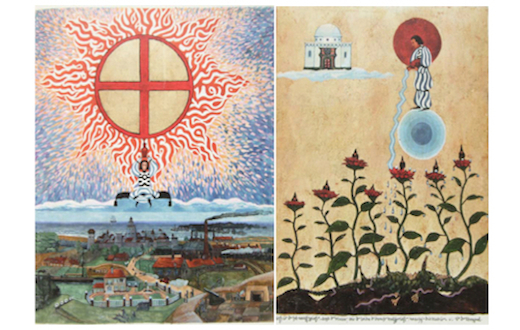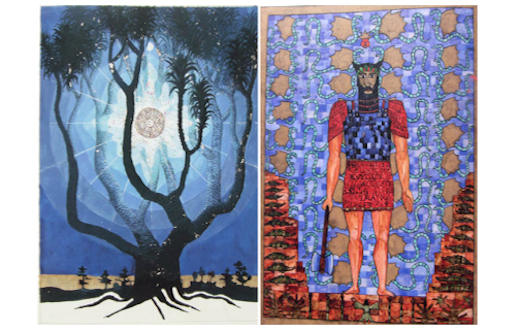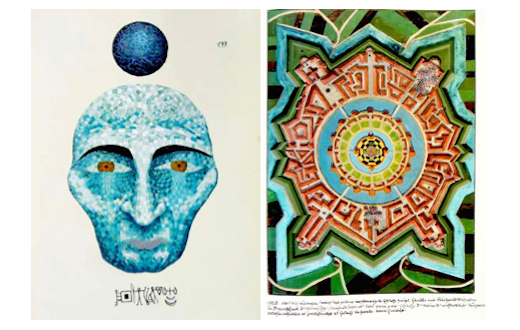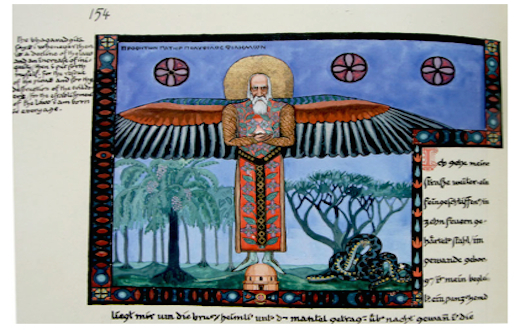The Red Book:
Jung’s Myth for Our Times
In Development
Inspired by Carl Jung’s enigmatic The Red Book this art-house style feature length film will bring the book to life for contemporary audiences in a labyrinthine odyssey through this, the central work of Jung’s life.
The Red Book‘s Relevance for Contemporary Times
Jung’s deep probing exploration of the human psyche and consciousness allows us to contextualise and account for a lot of what is challenging in modern times.
It comes at a time when mankind is desperately in need of a new vision of renewal.
It also gives us hope for finding ways to effectively engage with those challenges for the common good.
These central motif’s – at the heart of Jung’s work – will be the key underlying themes for this new film; situated as it is at such a critical cross-roads in the history of mankind, in the end-times of modernity and under the shadow of ecological crisis.
This film will bring Carl Jung’s enigmatic book to life in a probing, labyrinthine odyssey through the human psyche as a vehicle for exploring the state of contemporary life; combining styles from narrative, documentary and experimental film traditions fused into a unique poetic form.
About C. G. Jung
“Who spoke to me then? Who talked of problems far beyond my knowledge? Who brought the Above and the Below together, and laid the foundation for everything that was to fill the second half of my life with the stormiest passion? Who but that alien guest who came from above and from below?” (Jung 1963/1995: 30).
Carl Gustav Jung (1875-1961) was brought up in a religious family (his father was a priest). As a child he experienced powerful ‘big dreams’ and ‘visual hallucinations’ that were at odds with the Christian worldview of his times. These profound experiences were of seminal influence toward his subsequent theoretical innovations, and also toward his critique of Western culture which he believed had ‘lost its soul’.
In his early profession as a psychiatrist, Jung became an avid follower and acolyte of Sigmund Freud and his psychoanalysis. However, after some years of fruitful collaboration, Jung eventually broke away in 1912 and founded his own school, known as Analytical Psychology. Jung’s conception of the unconscious went beyond Freud’s understanding of it as ‘repressions of personal wishes’ to include a collective dimension comprised of numinous elements he termed archetypes. Jung also had wide interests that went significantly beyond psychiatry and psychology. These included areas such as mythology, folklore, art, literature and religious symbolism, as well as more arcane interests such as Gnosticism, alchemy, astrology and the kabbalah.
According to Professor Sonu Shamdasani, Jung “is widely recognised as a major figure in modern Western thought and his work continues to spark controversies. He played critical roles in the formation of modern psychology, psychotherapy and psychiatry” and further that “his work has had its widest impact however, outside professional circles … in the arts, the humanities, films and popular culture.”
About The Red Book
“You know, Oh Philemon, the wisdom of things to come … Your wisdom is invisible, your truth is unknowable, entirely untrue in any given age, and yet true in all eternity, but you pour out living water, from which the flowers of your garden bloom, a starry water, a dew of the night” (Jung 2009: 316).
The Red Book is a richly ornate, illuminated manuscript that combines calligraphic text with exquisite watercolour painted images. It has been likened to the Irish Book of Kells and to the imagery and prophetic vision of William Blake.
For eighty years the book had been kept from the public eye. Eventually thanks to the tenacious perseverance of Sonu Shamdasani, this work finally came to light by way of a ‘true to size’ colour publication in 2009.
Since publication of the Red Book there have been numerous conference presentations, symposia, web forums, academic articles, book chapters and even entire books written on this enigmatic work. Not surprisingly, a vast array of perspectives and interpretations have accumulated over the few years since its publication. In essence, this visionary work by one of the most significant minds of the 20th century is sure to have momentous ramifications for the 21st century.
According to Shamdasani “There can be few unpublished works that have already exerted such far-reaching effects upon twentieth-century social and intellectual history as Jung’s Red Book.”
The Red Book – An Epochal Opus for the 21st Century
The Red Book’s relevance for contemporary times comes further into focus with the advent of a new book series that is currently being published entitled Jung’s Red Book for Our Time: Searching for Soul under Postmodern Conditions (Editors: Murray Stein and Thomas Arzt).
The Editors write that “the essays in this new series are geared to the recognition that the posthumous publication of The Red Book was a meaningful gift to our contemporary world. Similar to the volatile times Jung found himself in when he created this work a century ago, we today too are confronted with highly turbulent and uncertain conditions of world affairs that threaten any sense of coherent meaning, personally and collectively. The Red Book promises to become an epochal opus for the 21st century in that it offers us guidance for finding soul under postmodern conditions.”
About This Film
Primarily this will be a lyrical, poetic invocation of Jung’s work rather than an attempt to explain or present the Red Book in a cognitive or fully rational way. Following Jung’s mystical gaze, the film will draw upon its poetic points of departure, illuminating his weave-like, dreamlike work. The film will take the viewer on a series of dream-like encounters through the Red Book invoking a sense of the journey that brought the work to life. By the end, the viewer will have shared in some part of that long, challenging and inspiring odyssey of ‘soul retrieval’ undertaken by Jung himself.
Combining styles from narrative, documentary and experimental traditions the film will fuse a number of stylistic approaches into a unique poetic visual form.
Dónal Ó Céilleachair :: Director & Screenwriter
Prof. Sonu Shamdasani :: Project Adviser Sonu is the noted Jung scholar primarily responsible for bringing The Red Book into publication after thirteen years of exhaustive editorial work. Sonu is a professor of Jung history at University College London. He is author of several books, including C.G. Jung: A Biography in Books.
Dr Mathew Mather :: Screenwriter & Collaborator Mathew completed a PhD on Jung and Alchemy at the University of Essex in 2013. His thesis was adapted into a book publication The Alchemical Mercurius: esoteric symbol of Jung’s life and works (Routledge 2014) – a work that illuminates a uniquely esoteric perspective on the Red Book. Mathew has presented on The Red Book at international conferences, and at the International School of Analytical Psychology ISAP, in Zurich. He is a full time lecturer at Limerick School of Art and Design (Limerick Institute of Technology), Ireland and co-founder of Art & Psyche, Ireland.
Bettina Wilhem :: Creative Collaborator Granddaughter of Richard Wilhelm (contemporary and friend of C.G. Jung) Bettina is the director of ‘Wisdom of Changes – Richard Wilhelm and the I Ching’. Bettina was born in Shanghai, China. She received a Postgrad. Diploma in Film and Television from Middlesex Polytechnic, London. She is co-founder of the Berlin Transform theatre and works there as director, actress and producer.
All images are courtesy of W.W. Norton & Co. and Foundation of the Works of C.G. Jung.

